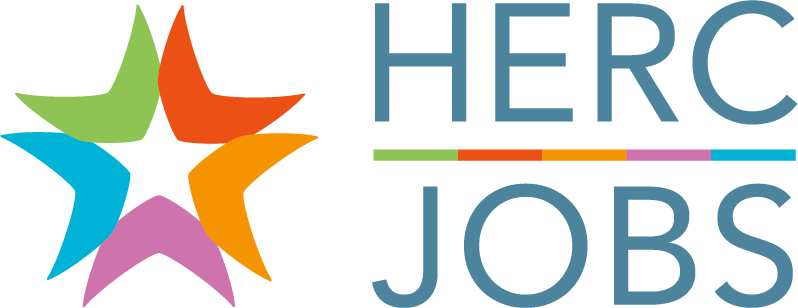Optimize Your Resume and Cover Letter
Retired U.S. Army veteran Adam Potter applied to multiple HR positions at a higher education institution prior to receiving a response. Now that he works for the University of Iowa as a Senior Human Resource Specialist, he has a better understanding of why he wasn’t considered the first few times he applied—he wasn’t addressing the specific requirements of the position in his resume. Potter offers these tips on how to optimize your resume and cover letter to break into higher ed:
What must be in your resume:
When a university posts a job it will typically list the required qualifications for this position: education, experience, and a few other qualifications needed to be successful in the role. Well, those required qualifications, we have to be able to see those in the resume. They have to be addressed. Otherwise, it can’t be determined you’re qualified for a role. Institutions will typically screen your resume submitted based on the qualifications listed in the job posting.
The biggest mistake people make with their resume:
When I go to job fairs or do a career counseling session, I’ll ask you point blank, “Are you using the same exact resume for every position you apply for?” Typically the answer is yes. The job seeker is going to struggle when they do that. Job seekers need to tailor their resume to each position they’re going to apply to, specifically addressing those qualifications.
When it comes to addressing qualifications on a resume, the way I coach is, you’re going to put your company, job title, and dates, then a very brief one to two sentences, what do you do in this role. And then develop your bullet points under that position that address the specific qualifications of the job you’re going to apply to. So if I need somebody that has excellent communication skills, is proficient with Microsoft Office suite, and has an excellent track record of excellent customer service, I should see bullets under that position that matches the qualifications I’m looking for.
And make them quantifiable as well. A lot of people will say yes, I have excellent communication skills, and that’s it. But that’s not quantifiable. It’s one thing to say it—how can you quantify it? So the bullet points should address one of three things—outcomes, achievements, or metrics. Take metrics, for example. I performed this action, and it resulted in $50 million in cost savings, or increased productivity by 50%. An achievement-based bullet would be, I received superior marks on my performance evaluation. Outcome-based would be I did this action, it resulted in (outcome).
Differentiate your cover letter from your resume:
A resume and a cover letter are meant to do two different things. And I think a lot of job seekers get those confused. The resume is designed to inform the employer of your qualifications, and the cover letter is meant to persuade the employer to bring you in for an interview. I think cover letters are very generic. Many of them are identical in nature. Typically it’s “I’m interested in a position here at (Insert Company Name), here’s a list of all my qualifications you’re already going to read on my resume, thank you for your time and consideration, I look forward to speaking with you.” It’s a typical cookie-cutter cover letter, you see it all the time. You need to create a personalized cover letter for each position.
That introduction, try to tell the story a little bit, or address some of the potential bias you might be subject to. When I was applying for positions in Iowa I was living in Wyoming and I would have employers send me feedback, it wasn’t really a rejection, but it was like, “You understand this position’s in Iowa?” So I think there was some geographical bias there, so I started putting in my cover letter in that first paragraph, “I am looking to relocate to Iowa.” Start addressing that question.
Your cover letter should be personalized:
Job seekers need to create a personalized cover letter and avoid duplicating their resume. Consider setting the stage in your introductory paragraph and address why you may be seeking a new opportunity. Then consider answering three “why” questions in the body of the cover letter.
The first “why” you need to address is, Why are you applying for this job? What is it that makes you excited to submit your application for this role? I think that speaks volumes and it sets the stage for the interview, because nine times out of 10 it’s an interview question. You’re already setting the stage when you address that in the cover letter.
The second paragraph is, Why are you interested in working for that specific company or that department or that organization? Go to their website, find out what their mission statement is or value statement. What jumps out at you and makes you excited to go join that team?
The third “why” is, Why are you the best-qualified candidate for this role? What are you bringing to the table? What major contribution will you bring to the team? And I would stick to no more than two things, so again not restating your whole resume, just quick highlights. Here’s my biggest strength. Something that’s gonna jump out and grab somebody’s attention.
And then your closing paragraph, this is where I say put in a soft close. I look forward to discussing my qualifications further during our interview. Just putting yourself in the interview seat. This basic formula will help in creating a personalized cover letter that will prove deeper insight into candidacy.
Want more CV/resume and cover letter tips? Download our free ebook, How to Apply for Higher Education Careers (Revised Edition).
Check out some Top Articles on HERC Jobs.
About the Author: Harold Gutmann is the director of brand and marketing strategy at Santa Clara University. He is a longtime writer and editor who is proud to work in higher education, and encourages all job seekers to consider it.

